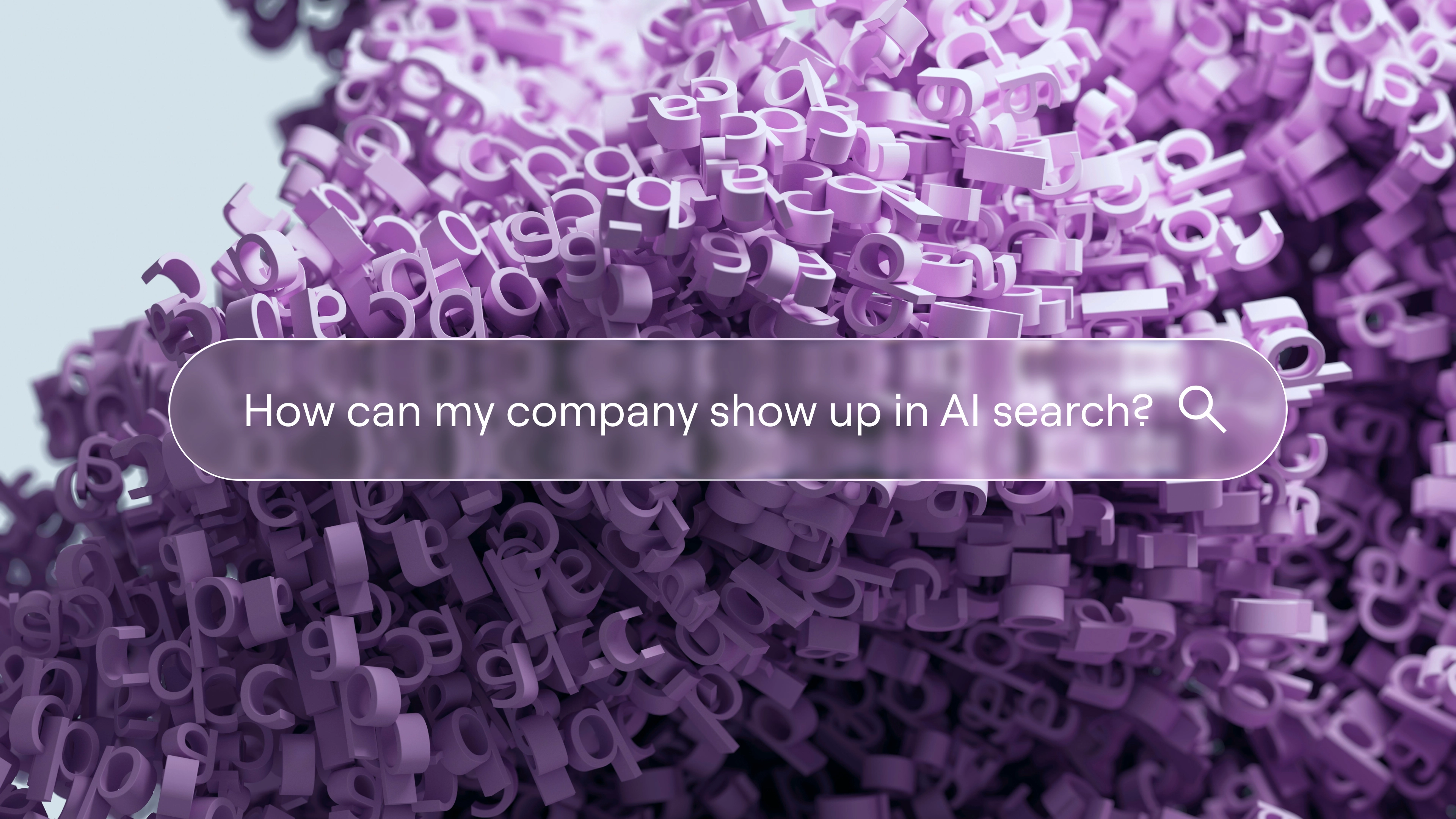The future of discoverability: Part 1
The future of AI search is brand-led

Key Points:
- Artificial intelligence is transforming how people search, evaluate, and act on information.
- It is reshaping the discoverability landscape by curating, summarizing, and recommending content based on trust.
- In this new era, optimization alone is not enough.
- Your brand must be trusted to be found.
Artificial intelligence is fundamentally reshaping how people discover information, make decisions, and engage with content. AI-generated overviews now intercept traffic before users reach your site, and 71.5% of people regularly use tools like ChatGPT and Perplexity for discovery. These platforms don’t just rank results: they synthesize, summarize, and cite sources they trust.
Today, trust isn’t built distinctly on traditional Search Engine Optimization (SEO) fundamentals like keywords, rankings, or technical optimization. It’s built largely on the basics of brand strategy: credibility, reputation, and consistent brand expression across every touchpoint. Your brand has become the signal AI looks for, determining whether you're surfaced, summarized, or skipped.
“Your brand has become the signal AI looks for, determining whether you're surfaced, summarized, or skipped.”
Breaking down the change in search
For years, SEO was the foundation of digital visibility, but the rise of AI-powered systems has changed how content is evaluated and what earns visibility.
In this new environment:
- Ranking doesn’t guarantee clicks — 80% of consumers rely on “zero-click” results at least 40% of the time, reducing organic web traffic by an estimated 15% to 25%.
- Visibility depends on reputation — The brands showing up are the ones audiences already know and trust.
- Authority is an algorithmic currency — Consistent signals across content, site structure, and backlinks tell AI that your brand deserves inclusion.
- Google isn’t the sole gatekeeper – The real question isn’t how to rank, it’s where your brand needs to show up to be discovered across platforms. In an AI-first world, that means thinking beyond traditional search engines.
Evolving from SEO to AEO/GEO for AI discoverability
AI has expanded the playing field. Traditional SEO still matters, but staying discoverable today now means showing up across three fronts:
01 | SEO (Search Engine Optimization)
Be findable in traditional search engines
Nail the fundamentals to keep you visible: relevant keywords, metadata, clean site structure, fast load times, mobile-friendly UX, and credible backlinks.
02 | AEO (Answer Engine Optimization)
Be the answer AI trusts most for its answers
Structure content for quick, credible responses in AI overviews, voice assistants, and featured snippets: clear Q&A formats, expert attribution, and depth that signals authority.
03 | GEO (Generative Engine Optimization)
Be the source AI cites in its generative tools
Build distinct brand authority so tools like ChatGPT and Perplexity recognize and reference you: consistent brand signals, authoritative content, reputable mentions, and trusted ecosystems.
“In this new reality, discoverability isn’t measured in clicks. It’s measured in trust.”
Mastering all three — SEO, AEO, and GEO — isn’t just about technical optimization. It’s about consistently proving your brand’s credibility wherever people, or AI, go to find answers. In this new reality, discoverability isn’t measured in clicks. It’s measured in trust. Your brand is at the center of that trust.
Brand is the new ranking factor
Brand is no longer a wrapper around your content; it’s what drives it. Your brand strategy should define what you talk about and how you talk about it. The more clearly and consistently you show up around a set of topics and values, the more brand authority you’ll build, and the more likely AI is to recognize, surface, and trust your content. In this landscape, your brand powers your search visibility.
AI engines evaluate:
- What content you publish
- Where your content appears
- How clearly and consistently your brand signals show up
- How audiences engage with your brand and your content
- Your overall reputation across the ecosystem
Ask yourself:
- What is our brand known for?
- What would we like our brand to be known for?
- Is our brand POV and expression consistent and clear?
- Do we have a loyal customer base?
- Are we engaged in quality partnerships?
- Are industry experts referencing our brand?
- Would AI trust us enough to recommend us?
AI tends to cite:
- Recognizable brands with unified narratives
- Experts with authored content
- Sources mentioned by trusted publishers
To win visibility today, you need more than keywords. You need brand authority.
How to make your brand AI-visible
In a generative world where everyone has access to the same tools and tactics, your brand becomes your competitive edge. Your brand is what sets you apart in AI-powered discovery by being consistently expressed, structured, and cited.
Earning trust from AI engines isn’t about gaming algorithms; it’s about showing consistency, clarity, and credibility.
Here’s a couple ways to build a brand AI recognizes and recommends:
Align your brand to topics your audience is actively exploring with structured content that bridges what you stand for with what they’re looking for.
Your tone, voice, and format are algorithmic signals. Be recognizable across every piece of content.
AI evaluates what you publish and where you appear. Show up consistently across:
- Owned channels (website, blog, newsletter, podcast)
- High-authority media
- Third-party directories and trusted platforms
Branded videos, demos, and articles signal depth and originality making it more likely AI will surface or cite your content.
Schema is a way to label your content so AI can understand what it is and who it comes from. Think of it as structured trust. Align schema with your brand pillars and use it consistently across pages and platforms to reinforce your brand authority.
- Use schema types like Organization, Author, FAQ, Product, and Article to help AI interpret your content and credibility
- Link your brand to verified profiles like LinkedIn
- Highlight in-house experts with author schema to build credibility
- Standardize schema as part of brand governance
Just like robots.txt guided how search engines crawled sites, LLMs.txt guides how AI systems ingest and use your brand content. It’s a discoverability contract between your brand and the machines deciding what gets cited. Smart brands are already planning what content they want in LLM training data, and how to mark it.
Prioritize high authority partnerships and mentions from trusted sources such as: respected publications, expert voices, and organizations with strong domain authority.
Ratings, reviews, case studies, and testimonials all serve as signals of real-world trust often baked into AI training data.
How you handle reviews, feedback, and company issues matters. AI picks up on tone, transparency, and follow-through.
“We help brands stay discoverable by sharpening their positioning, amplifying their authority, and building ecosystems that signal trust at every touchpoint.”
Brand strategy IS discoverability strategy
At Lippincott, we believe brand strategy doesn’t just support discoverability. It drives it. Today, brands must define what makes them distinct and reinforce it consistently across every message and experience to be surfaced. We help brands stay discoverable by sharpening their positioning, amplifying their authority, and building ecosystems that signal trust at every touchpoint. In an AI-curated world, discoverability starts with brand.






